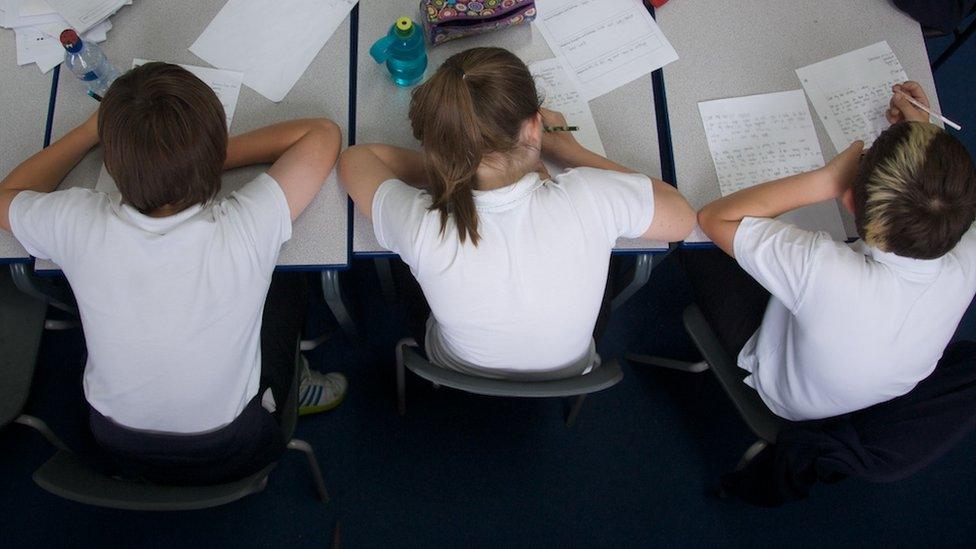Fresh talks to prevent teachers' strike over pay
- Published

More talks are to take place to try to see off the threat of a strike by teachers over pay.
Negotiations between unions and employers have again ended without agreement, but more discussions will take place next Monday.
Last week, members of the largest union, the EIS, rejected an offer of a series of rises worth 9% by April plus another 3% next year.
They are planning to start a strike ballot in a fortnight.
Union leaders have warned they could go on strike the day before the school exams start.
The council umbrella body Cosla and the Scottish government have both said that industrial action would be in no-one's interests and want to see a deal struck.
'No-one's interests'
Teachers' pay is negotiated by a body which brings together unions, councils and the Scottish government.
Councils employ teachers but pay is set nationally.
The Scottish government and councils have described the offer currently on the table as the best pay offer in the public sector in the UK.
But the EIS wanted a 10% rise backdated to last April.
The SSTA union's members voted to accept the pay offer, as did the association representing head teachers and deputies.
'Last resort'
However, such is the size of the EIS that its position effectively becomes the teachers' position in the negotiations.
EIS general secretary Larry Flanagan said he hoped a negotiated settlement was still possible.
He said: "At today's meeting, we presented the recent EIS ballot result, and indicated our intended move to a statutory ballot for strike action.
"This provides clear evidence of the need for the other parties to improve the offer in order to gain acceptance from teachers.
"We also reiterated that the EIS is continuing to seek a negotiated settlement, that we were willing to meet at any time, and that strike action would be a last resort."
When the pay offer was rejected, Mr Flanagan said some teachers were becoming "militant" over pay and highlighted their concerns about issues such as their workload and the help and resources available for students with additional support needs.